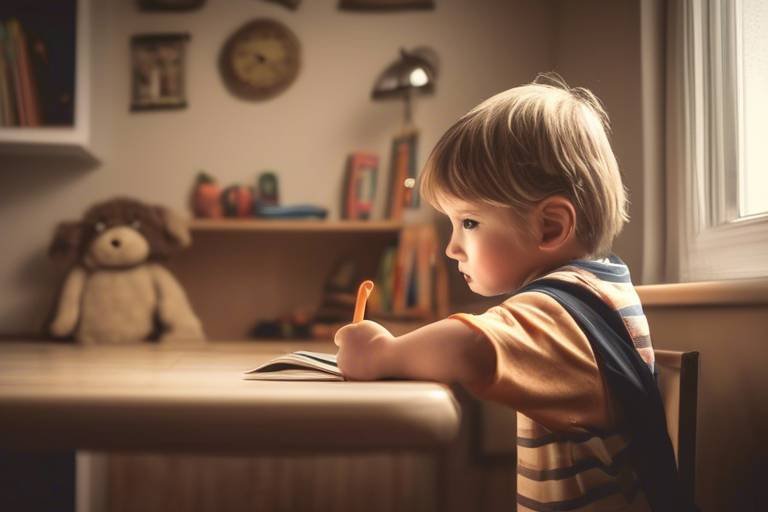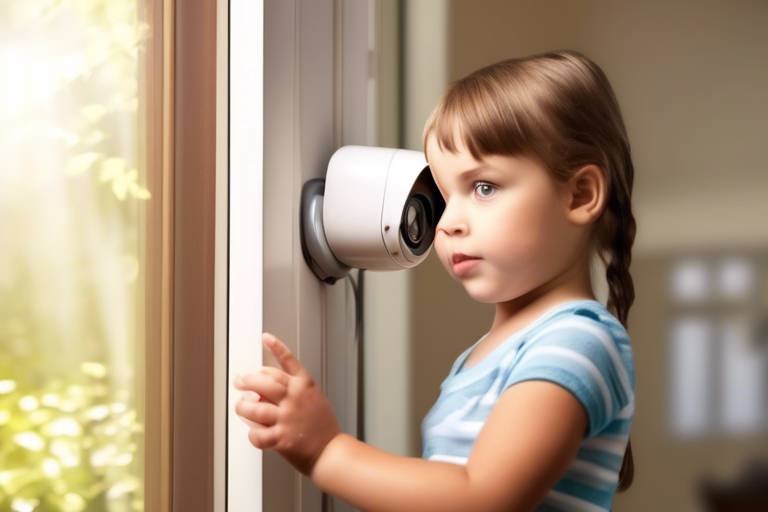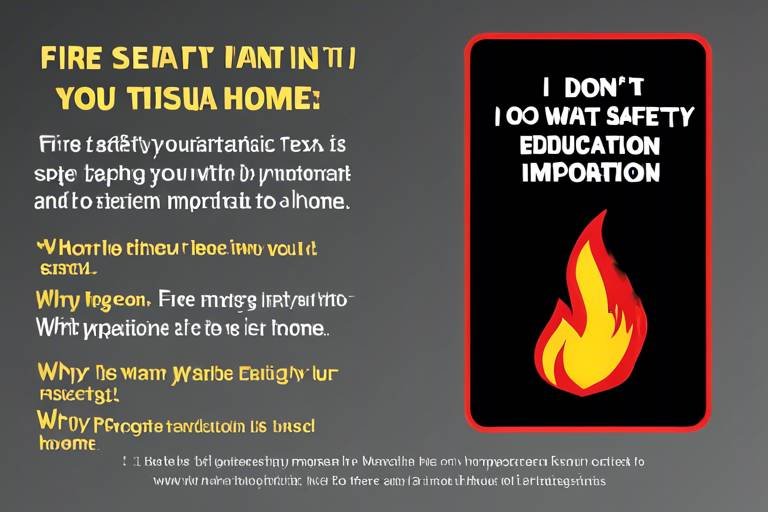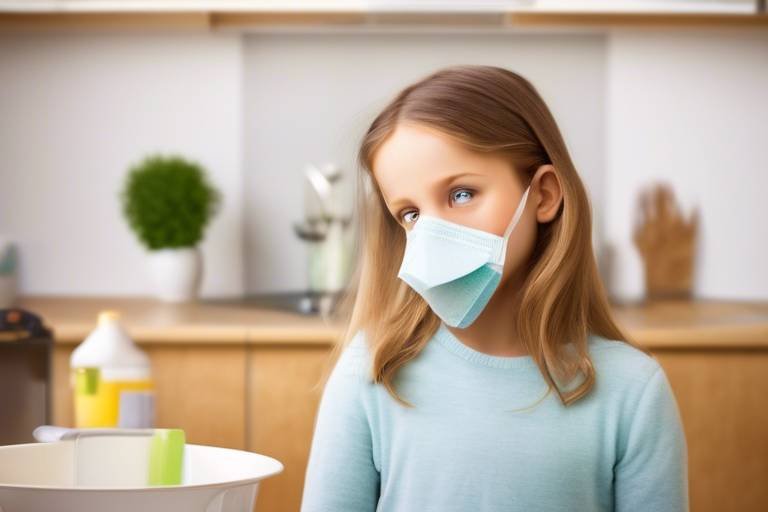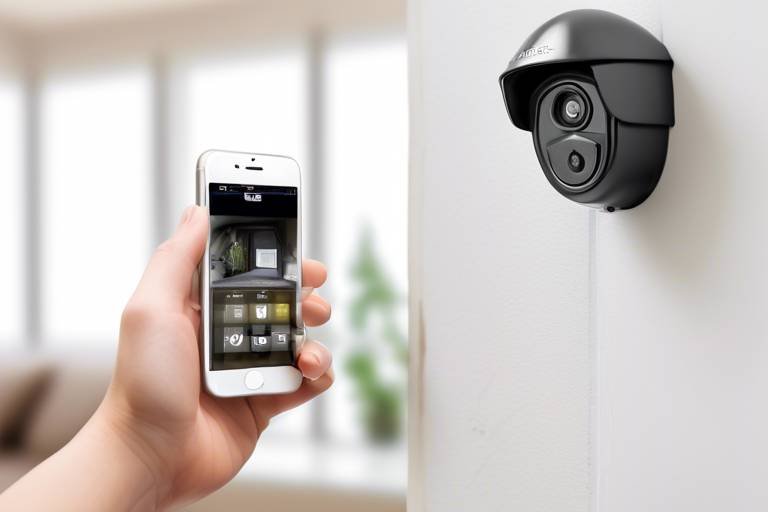How to Teach Your Kids About Home Safety
As parents, we often find ourselves juggling a million things at once, from work to household chores to keeping our little ones entertained. However, amidst all this chaos, one crucial responsibility stands out: teaching our kids about home safety. It's not just about telling them to be careful; it’s about instilling a sense of awareness that can protect them from potential hazards lurking around the house. Have you ever thought about how your home, which should be a safe haven, can also be a place filled with hidden dangers? From sharp objects to slippery floors, understanding these risks is the first step in equipping your children with the knowledge they need to stay safe.
Imagine your child walking into a room and immediately recognizing the potential dangers—like the hot stove in the kitchen or the cleaning supplies under the sink. This isn't just wishful thinking; it’s entirely achievable with the right education and strategies. To kick things off, let’s dive into some common safety risks that can be found in our homes. After all, knowledge is power, and the more informed our kids are, the better they can navigate their environment. So, are you ready to transform your home into a fortress of safety for your children?
Identifying common home safety risks is crucial for teaching children. You might be surprised to learn that many everyday items can pose significant threats if not handled properly. For instance, electrical outlets, hot surfaces, and even household plants can be hazardous. It's essential to sit down with your kids and discuss these risks openly. You could even create a fun game where they identify potential dangers around the house. This not only makes learning enjoyable but also reinforces their ability to recognize hazards in real life.
Here are some typical hazards found in homes:
- Sharp objects: Knives, scissors, and broken glass can lead to serious injuries.
- Fire hazards: Unattended candles, stoves, or faulty wiring can pose a risk.
- Slips and falls: Wet floors, clutter, or loose rugs can cause accidents.
- Poisoning: Cleaning supplies, medications, and certain plants should be kept out of reach.
By highlighting these risks, you can create a more awareness-oriented environment for your kids. Remember, the goal is not to scare them but to empower them with knowledge. They should feel confident in their ability to recognize and avoid potential dangers, making home safety a shared responsibility.
Now that your kids are aware of the risks, it’s time to develop a comprehensive safety plan. This plan acts as a roadmap, guiding your children through various emergency situations. It should include emergency contacts, escape routes, and safety protocols for different scenarios, such as fires or natural disasters. Get your kids involved in this process! When they help create the plan, they’re more likely to remember it.
Consider holding a family meeting where everyone can contribute ideas. Discuss what to do in case of a fire: where to meet outside, how to call 911, and the importance of staying low to the ground if there’s smoke. This engagement not only reinforces their learning but also fosters a sense of teamwork and responsibility.
Fire safety is a vital topic for kids. Start by teaching them about the importance of smoke detectors. Explain how these devices work and why they should be checked regularly—ideally every month. You can even turn this into a monthly ritual, making it a fun family activity.
But that’s not all. Discuss common fire hazards found in the home, such as:
- Unattended cooking
- Overloaded electrical outlets
- Candles left burning
By making fire safety a regular topic of conversation, you can help your kids understand the seriousness of the issue while equipping them with the knowledge they need to stay safe.
Teaching children about fire extinguishers can save lives. Show them where the extinguishers are located and explain how to use them. A simple way to remember how to operate a fire extinguisher is the acronym PASS:
- P: Pull the pin.
- A: Aim low at the base of the fire.
- S: Squeeze the handle.
- S: Sweep from side to side.
Practice this together so they feel comfortable and confident if a fire ever occurs.
Understanding smoke alarms is critical for home safety. Discuss with your kids how smoke alarms work, and emphasize the importance of having them in every sleeping area. Make it a habit to test the alarms together and replace the batteries at least once a year. This simple act can be a lifesaver.
Accidents can happen anywhere, especially at home. Talk to your kids about common household accidents and how to prevent them. For instance, slipping on a wet floor can be a serious hazard, so teach them to always be cautious and alert. Encourage them to keep their play areas tidy to prevent trips and falls. By instilling these habits early on, you’re setting them up for a lifetime of safety awareness.
Knowing how to respond in emergencies is essential. Teach your kids the basics of emergency response, including when and how to call for help. Role-playing can be a fun and effective way to practice these skills. Create realistic scenarios for your children to respond to, reinforcing safety concepts while boosting their preparedness.
First aid knowledge can be invaluable. Teach your children simple first aid techniques, such as how to clean a cut or what to do if someone has a nosebleed. This not only builds their confidence but also empowers them to help others in need.
Role-playing can enhance learning. Create various scenarios where your kids can practice their responses. For instance, simulate a fire drill or a medical emergency. This hands-on approach makes the learning process engaging and memorable, ensuring they remember what to do when it counts.
Q: At what age should I start teaching my kids about home safety?
A: It's never too early to start! Even toddlers can begin learning about basic safety rules, while older children can handle more complex topics.
Q: How often should we review our home safety plan?
A: It's a good idea to review your safety plan at least once a year or whenever there are significant changes in your home or family dynamics.
Q: What should I do if my child is scared during safety drills?
A: Reassure them that these drills are just practice and that you're there to keep them safe. Make the drills fun and engaging to reduce fear.

Understanding Home Safety Risks
When it comes to keeping our little ones safe, understanding home safety risks is the first step in the journey. Think of your home as a treasure chest filled with valuable memories, but also hidden dangers. Just like a pirate needs a map to find the treasure without falling into traps, parents need to identify potential hazards that could jeopardize their child's safety. This involves looking at every corner of your home and recognizing the common risks that might be lurking around.
Some typical hazards found in homes include:
- Slips and Falls: Wet floors, cluttered hallways, and loose rugs can turn a fun day at home into a trip to the emergency room.
- Poisoning: Household cleaners, medications, and even some plants can be toxic. It’s essential to keep these out of reach.
- Fire Hazards: From candles to electrical outlets, many items in our homes can pose a fire risk if not monitored properly.
- Choking Hazards: Small toys and household items can easily become choking hazards for younger children.
By recognizing these risks, parents can take proactive steps to mitigate them. For instance, consider conducting a thorough walk-through of your home. Look at each room with a critical eye, just like a detective on a mission. Are there sharp objects within reach? Is the kitchen a safe zone, or could a curious child get into trouble? The more aware you are of your home's layout and potential dangers, the better you can educate your kids about safe practices.
Additionally, it’s crucial to involve your children in this process. Explain to them why certain areas need to be off-limits and what they should do if they encounter something dangerous. Kids are naturally curious, and by making them part of the safety conversation, you empower them to be vigilant and responsible. Use simple language and relatable analogies to help them grasp the concepts better. For example, you might say, "Just like we wear helmets when riding bikes to protect our heads, we need to keep sharp objects away to protect our bodies."
In summary, understanding home safety risks is not just about identifying hazards but also about creating an environment where children feel safe and informed. By taking the time to recognize these risks and educate your kids, you’re not just protecting them; you’re also instilling a sense of responsibility and awareness that will serve them well throughout their lives. Remember, safety is a shared journey, and every step counts!

Creating a Safety Plan
Creating a comprehensive safety plan is not just a good idea; it's an absolute necessity for every household. Imagine your home as a ship sailing through unpredictable waters—without a solid plan, you might find yourself lost at sea during a storm. By developing a safety plan, you equip your children with the knowledge and skills they need to navigate through various emergencies, ensuring they feel secure and confident in their ability to respond.
Start by involving your kids in the planning process. This not only makes them feel important but also reinforces their understanding of the safety measures in place. Gather your family around the dining table or in the living room and brainstorm what to include in your safety plan. Think about potential emergencies such as fires, natural disasters, or even intruders. Discussing these scenarios openly helps to demystify them and reduces fear.
One of the key components of your safety plan should be a list of emergency contacts. This list should include not only immediate family members but also trusted neighbors, relatives, and emergency services. It's like having a lifeline in a storm; when the waves get rough, knowing who to call can make all the difference. Make sure to place this list in a visible location, such as on the refrigerator or in a family binder, so that everyone knows where to find it.
Next, establish clear escape routes for your home. Much like a fire drill at school, practicing these routes can save lives. Walk through your home with your children and identify at least two ways out of every room. Mark these escape routes on a diagram of your home, which can serve as a visual guide for your kids. Discuss where they should meet outside once they’ve exited the house—this is crucial for ensuring everyone is accounted for.
Additionally, consider creating a list of safety protocols tailored to various situations. For example, what should your kids do if they smell smoke? Or what if they hear a strange noise outside? Teaching them specific actions to take in these scenarios can empower them. You might say, “If you smell smoke, don’t panic! Get low to the ground and find the nearest exit.” By giving them clear instructions, you're equipping them with tools they can use in real-life situations.
Finally, regular practice of your safety plan is essential. Schedule monthly drills to ensure everyone remembers what to do in an emergency. Just like athletes practice to improve their skills, your family needs to rehearse these safety measures to feel prepared. During these drills, ask your children how they feel and what they think could be improved. This feedback loop will not only refine your plan but also make your children feel more involved and engaged.
- What should be included in a safety plan? A safety plan should include emergency contacts, escape routes, safety protocols for various situations, and regular practice schedules.
- How often should we practice our safety plan? It's advisable to practice your safety plan at least once a month to keep everyone familiar with the procedures.
- Can children understand emergency procedures? Yes! Children can grasp emergency procedures when explained clearly and practiced regularly, making them feel empowered and secure.
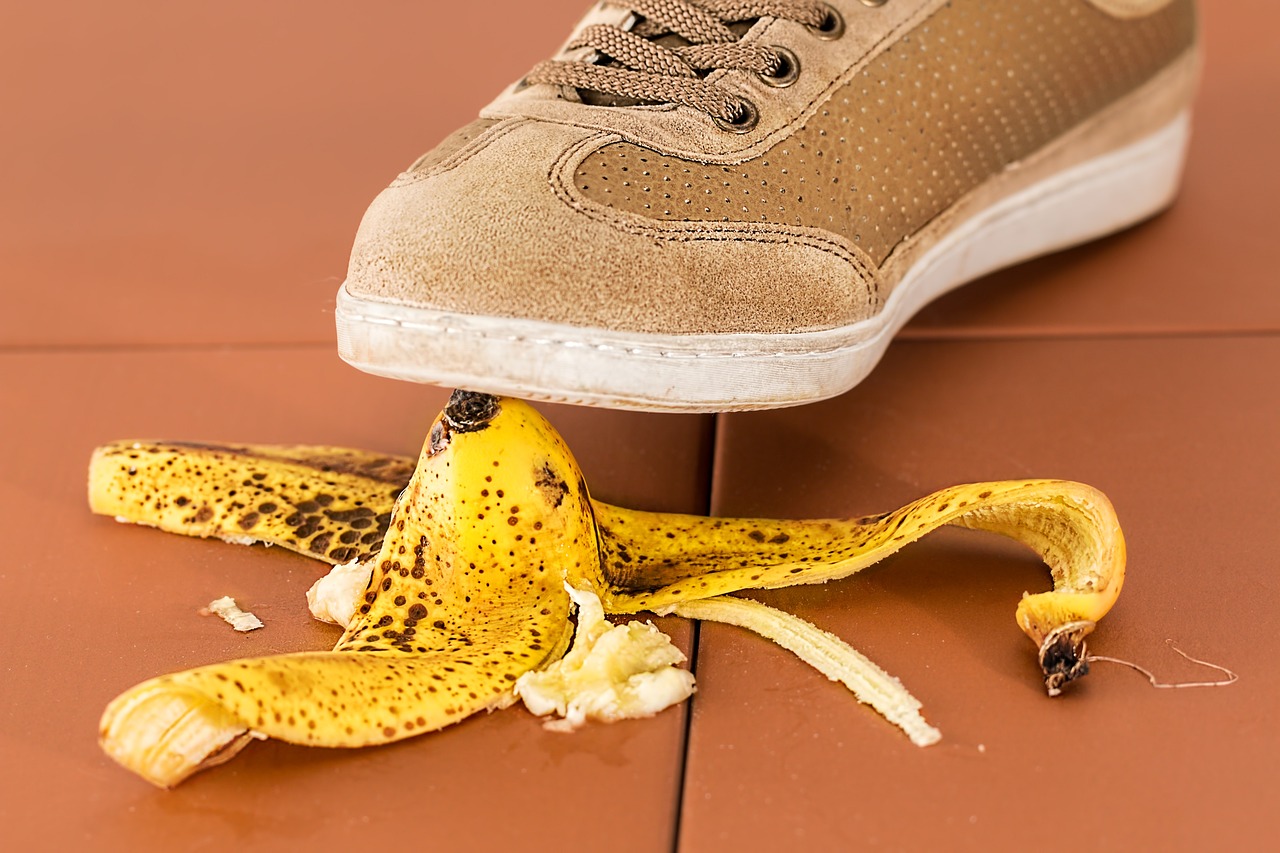
Fire Safety Measures
When it comes to keeping our homes safe, fire safety is a topic that cannot be overlooked. Imagine the panic of a fire breaking out—knowing what to do can mean the difference between safety and disaster. So, how do we equip our kids with the knowledge they need to stay safe? First, it's all about education. Kids should understand what fire is, why it can be dangerous, and how to recognize potential fire hazards in their environment. You might think that fire safety is just for adults, but children can grasp these concepts too!
To start, make sure your home is equipped with smoke detectors. These little devices are like the superheroes of fire safety, alerting everyone when there’s smoke in the air. Teach your children that they should never ignore the sound of a smoke alarm. Instead, they should know to evacuate immediately and find a safe place outside. Regularly test the smoke detectors together and explain how they work. This not only demystifies the technology but also helps them understand the importance of being alert.
Another critical aspect is identifying fire hazards around the home. Have a fun family activity where you walk through each room and look for potential dangers.
- Are there any frayed electrical cords?
- Is there clutter near heat sources?
- Are candles left unattended?
Next, practice fire drills at home. Just like schools do, having a plan in place can prepare your children for the unexpected. Designate a meeting place outside where everyone can gather after evacuating. Role-playing this scenario can make it less intimidating for kids and ensure they know exactly what to do when the alarm sounds. Remember, practice makes perfect, and the more familiar they are with the steps to take, the less frightened they’ll be in a real emergency.
Finally, it’s essential to teach your children about fire extinguishers. Knowing how to use one can be a lifesaver. Show them where your fire extinguishers are located and explain the PASS technique: Pull the pin, Aim low, Squeeze the handle, and Sweep from side to side. Consider having a demonstration where they can practice using a fire extinguisher in a controlled environment. This hands-on experience will boost their confidence and prepare them to act if they ever face a small fire.
In conclusion, teaching fire safety measures to your kids is not just about imparting knowledge; it's about instilling a sense of responsibility and preparedness. By engaging them in discussions about fire hazards, practicing evacuation plans, and demonstrating the use of fire extinguishers, you’re giving them the tools they need to stay safe. Remember, safety starts at home, and your children are never too young to learn how to protect themselves and others.
Q: At what age should I start teaching my kids about fire safety?
A: It's never too early to start! Even young children can learn basic concepts about fire safety, such as "stop, drop, and roll" and recognizing smoke alarms.
Q: How often should I test my smoke detectors?
A: You should test your smoke detectors at least once a month and replace the batteries at least once a year.
Q: What should I do if my child is afraid of fire drills?
A: Talk to them about the importance of fire drills and reassure them that it’s just practice. You can make it fun by turning it into a game!
Q: Are there any resources for teaching kids about fire safety?
A: Yes! Many fire departments offer educational materials, and there are also online resources and games designed to teach children about fire safety in an engaging way.
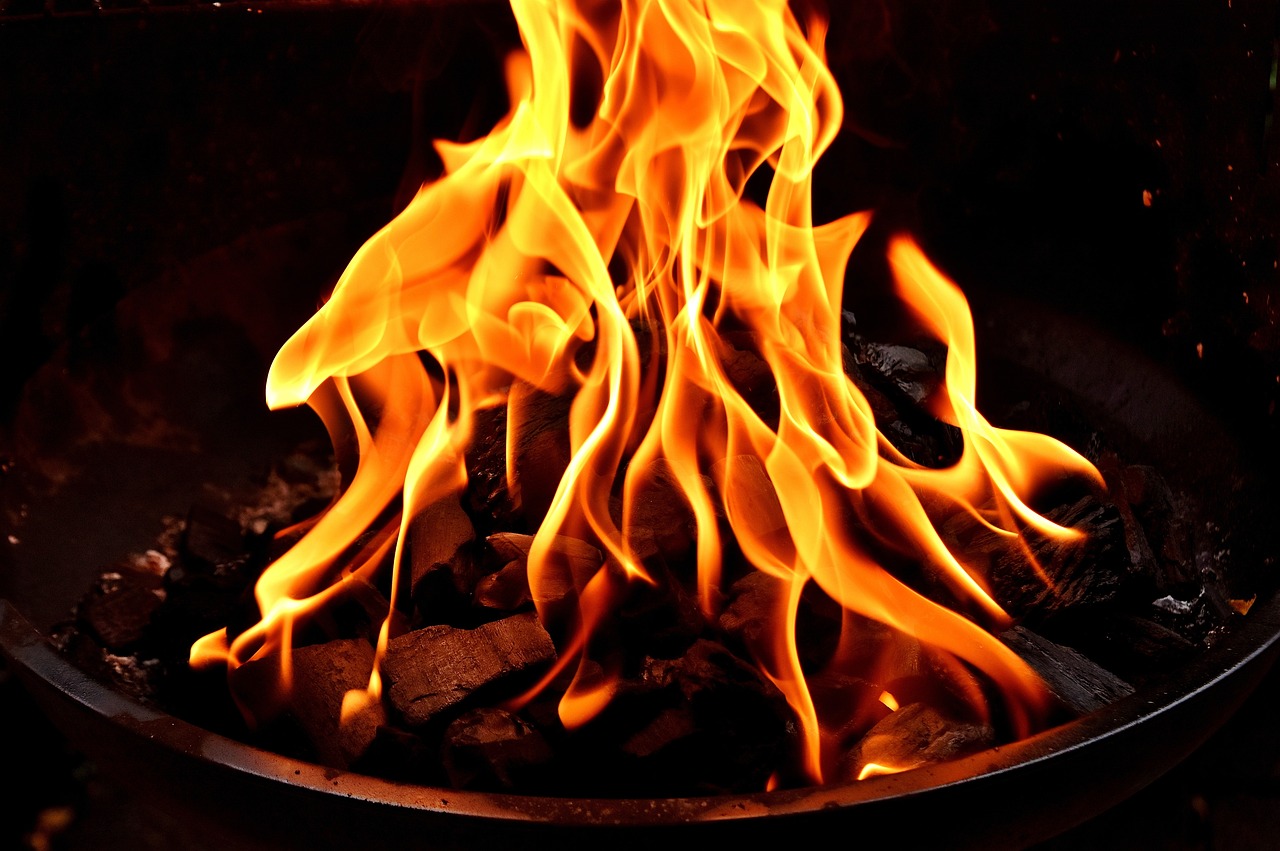
Using Fire Extinguishers
When it comes to fire safety, knowing how to use a fire extinguisher can be a game-changer in an emergency. It's like having a superhero tool at your fingertips! But before we dive into the nitty-gritty of using one, let's set the stage. Imagine a small fire starting in your kitchen while you're cooking. Panic can easily set in, but if your kids know how to use a fire extinguisher, they could potentially save the day. So, how do we teach them this vital skill?
First, it's essential to familiarize your children with the fire extinguisher's location. Make sure they know where the extinguishers are placed in your home. You might want to create a fun little scavenger hunt to find them, turning a serious topic into an engaging activity! Once they know where the extinguishers are, it’s time to explain their purpose and how they work. You can say something like, "Think of a fire extinguisher as a magic spray that puts out fires!" A little imagination goes a long way in helping kids understand.
Next, demonstrate the proper way to use a fire extinguisher. A simple acronym to remember is PASS, which stands for:
- Pull the pin: This allows you to use the extinguisher.
- Aim low: Point the nozzle at the base of the fire.
- Squeeze the handle: This releases the extinguishing agent.
- Sweep from side to side: This helps cover the fire effectively.
It's not just about knowing the steps; practice makes perfect! Consider doing a mock drill where you simulate a small, controlled fire (like using a candle or a small piece of paper) and let your kids practice using a toy extinguisher or a spray bottle. This hands-on experience can help them feel more confident and prepared in case of a real emergency.
Moreover, it's crucial to emphasize that fire extinguishers are meant for small fires. Teach your children that if a fire gets too big or out of control, the best action is to get out and call for help. Remind them that safety comes first, and sometimes the bravest thing to do is to leave the firefighting to the professionals. You can even create a little chart together that outlines when to use an extinguisher and when to evacuate, reinforcing their decision-making skills in emergencies.
Lastly, regular maintenance checks are vital. Involve your kids in checking the extinguishers periodically. Discuss the importance of ensuring they are fully charged and accessible. You could even set a reminder on your phone to check them every six months, turning it into a family activity. This not only keeps everyone safe but also instills a sense of responsibility in your children.
By equipping your kids with the knowledge and skills to use a fire extinguisher, you're not just teaching them about safety; you're empowering them to take action in emergencies. This confidence can make all the difference in a crisis, turning fear into a proactive approach. Remember, safety is a family affair, and teaching these skills together can strengthen your bond while ensuring everyone knows what to do when it counts!
Q: At what age can my child learn to use a fire extinguisher?
A: Children as young as 8 can start learning the basics, but hands-on practice should be supervised by an adult.
Q: How often should we check our fire extinguishers?
A: It's recommended to check them at least once every six months and replace them if they are expired or damaged.
Q: What type of fire extinguisher should I have at home?
A: A multi-purpose extinguisher (Class ABC) is ideal for home use, as it can handle various types of fires.

Recognizing Smoke Alarms
Understanding smoke alarms is not just a safety measure; it's a vital skill that can make a difference between life and death in an emergency. In a world where distractions abound, teaching your kids about smoke alarms can empower them to act swiftly and decisively when it matters most. Smoke alarms are designed to detect smoke and alert occupants of a potential fire, providing those precious extra minutes needed for escape. But do your children know what these alarms look like, how they function, and why they are so important?
First things first, let's break down the essential components of a smoke alarm. Most smoke alarms operate using one of two methods: ionization or photoelectric sensing technology. Ionization alarms are particularly responsive to flaming fires, while photoelectric alarms are better at detecting smoldering fires. It's crucial to explain this to your children, as knowing the difference can help them understand why smoke alarms are placed in various locations around the home. For instance, you might say, "Think of smoke alarms like superheroes—each one has its own special powers to detect different types of fires!"
Next, it's important to teach your kids how to recognize the sound of a smoke alarm. The beeping noise is often described as a high-pitched, repetitive sound. You can create a fun exercise by playing the sound of a smoke alarm and asking your kids to mimic it. This not only makes learning enjoyable but also reinforces the idea that this sound means they need to take immediate action. You might say, "When you hear that sound, it’s like a fire alarm bell ringing for your attention—it's time to move!"
Moreover, regularly checking smoke alarms is a family responsibility that children can be involved in. Set a routine—perhaps once a month—where everyone participates in testing the alarms. Show them how to press the test button on the alarm and listen for the sound. Explain that this simple act can save lives. You could even make a game out of it by timing how quickly everyone can find and test each alarm in the house. This not only teaches them about safety but also fosters teamwork and responsibility.
Lastly, don't forget to discuss the importance of battery maintenance. Smoke alarms need their batteries replaced at least once a year, and it’s essential that your children understand this. You might consider creating a home safety calendar together, marking the dates for battery checks and replacements. This way, they can visually see when it’s time to take action, making them feel more involved and responsible for their own safety.
In summary, recognizing smoke alarms and knowing how they work is a crucial part of home safety education for kids. By engaging them in these discussions and activities, you not only teach them about potential dangers but also instill a sense of empowerment and responsibility. Remember, the more informed and prepared they are, the safer they will be!
- How often should smoke alarms be tested? Smoke alarms should be tested at least once a month to ensure they are functioning properly.
- When should the batteries in smoke alarms be replaced? It is recommended to replace the batteries at least once a year; however, some families choose to do this during daylight saving time changes for consistency.
- How long do smoke alarms last? Most smoke alarms need to be replaced every 10 years, but always check the manufacturer's guidelines.
- Where should smoke alarms be installed? Smoke alarms should be installed on every level of the home, inside each bedroom, and outside sleeping areas.
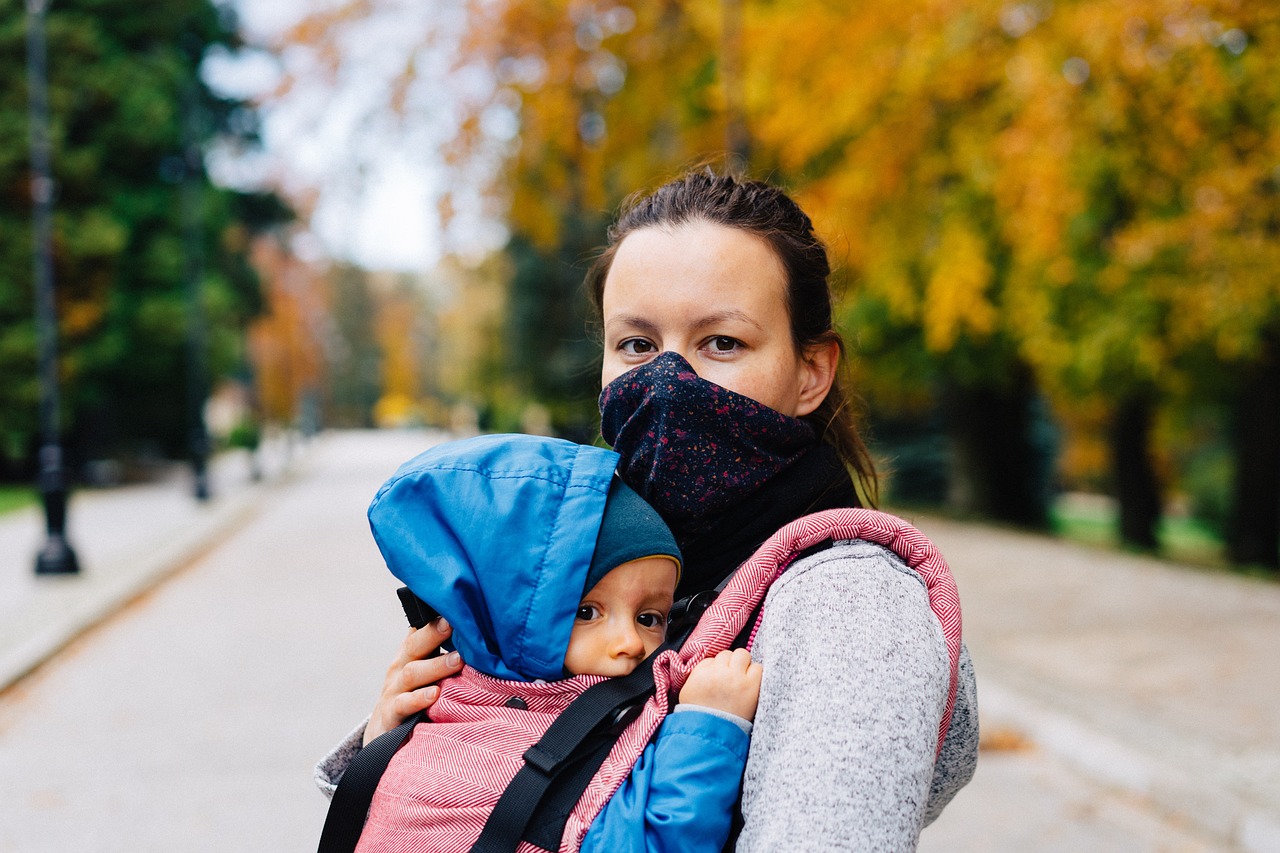
Preventing Accidents at Home
Accidents can happen anywhere, but the home should be a safe haven for your kids. It’s essential to create an environment where they can explore and play without the constant threat of injury. Picture this: your child, full of energy and curiosity, darting around the house. Now, imagine the potential hazards lurking in every corner. From sharp edges on furniture to slippery floors, the risks are real. So, how can we minimize these dangers? By being proactive and educating our children about safety, we can significantly reduce the likelihood of accidents.
First off, let’s talk about common household accidents. According to statistics, falls, cuts, and poisoning are among the leading causes of injuries in children at home. To combat these, it’s vital to conduct a thorough examination of your living space. Look for potential hazards, such as:
- Loose rugs that could cause trips
- Sharp objects like knives or scissors left within reach
- Small items that pose choking hazards
- Electrical cords that could lead to falls
Once you’ve identified these risks, it’s time to take action. For instance, securing rugs with non-slip mats can prevent falls, while keeping sharp objects out of reach can help avoid cuts. Additionally, consider installing safety gates to block access to stairs and other hazardous areas. Simple adjustments can make a world of difference!
Another crucial aspect of preventing accidents is teaching your children about safety rules. This doesn’t have to be a boring lecture; instead, turn it into a fun learning experience! Engage them in conversations about why certain behaviors are unsafe. For example, explain that running indoors can lead to slips and falls. Use relatable analogies, like comparing their behavior to a superhero who needs to be cautious to avoid getting hurt. By making safety relatable, you’ll encourage them to remember these lessons.
Moreover, don’t forget about the importance of supervision. While it’s great to give your kids some independence, they still need guidance, especially in potentially dangerous situations. Keeping an eye on them while they play can prevent many accidents before they happen. Think of it as being their safety net, ready to catch them before they tumble.
Lastly, regular maintenance around the house is key to ensuring a safe environment. Check for things like:
| Safety Check | Frequency |
|---|---|
| Smoke detector batteries | Monthly |
| Loose electrical cords | Weekly |
| Medications stored safely | Regularly |
| First aid kit supplies | Every 6 months |
By keeping a checklist and regularly assessing your home, you can catch potential hazards before they turn into accidents. Remember, safety is an ongoing process, not a one-time effort. So, take the time to educate your kids, maintain your home, and most importantly, create an open line of communication about safety. It’s all about teamwork!
1. What are the most common accidents that happen at home?
Common accidents include falls, cuts, choking, and poisoning. Regularly checking for hazards can help prevent these incidents.
2. How can I teach my kids about home safety?
Engage them in discussions about safety rules, use analogies they can relate to, and practice role-playing scenarios to reinforce their learning.
3. Should I supervise my children while they play?
Yes! Supervision is essential, especially for younger children, to prevent accidents and provide guidance when needed.
4. How often should I check smoke detectors?
It’s recommended to check smoke detector batteries monthly and replace them at least once a year.
5. What should I include in a first aid kit?
A first aid kit should include band-aids, antiseptic wipes, gauze, scissors, and any necessary medications. Regularly check and replenish supplies.

Teaching Emergency Response
When it comes to emergencies, knowing how to respond can make all the difference. Teaching your kids about emergency response isn't just about giving them information; it's about empowering them with the confidence to act in situations that could be scary or overwhelming. Imagine your child as a superhero, ready to spring into action when the unexpected happens. This mindset can transform their approach to emergencies, making them feel capable and prepared.
Start by explaining the importance of staying calm during an emergency. You might say, "When something unexpected happens, it's like a storm rolling in. If we panic, we can get lost in the chaos. But if we stay calm, we can find our way through it." Encourage your children to take a deep breath and think clearly. This simple technique can help them manage their emotions when faced with a crisis.
One of the first steps in teaching emergency response is showing your kids how to call for help. Make sure they know the emergency number in your area—like 911 in the United States—and practice what to say when they call. You can create a fun role-playing scenario where they pretend to call for help in different situations, such as a fire, a medical emergency, or if they feel unsafe. This practice helps them understand the gravity of the situation while also making it less intimidating.
Additionally, you can create a simple guide that outlines the steps to take in various emergencies. Here’s a quick example:
| Emergency Type | What to Do |
|---|---|
| Fire | Get low to the ground, find the nearest exit, and call 911 once safe. |
| Medical Emergency | Call 911, provide clear information about the situation, and stay calm. |
| Intruder | Find a safe place, lock the door, and call for help. |
In addition to calling for help, it’s crucial for children to understand the importance of identifying safe places during an emergency. Teach them to recognize safe spots in your home, such as a neighbor’s house or a designated meeting area outside. This knowledge can be a lifeline in a crisis, giving them a clear path to safety.
Another effective way to enhance their learning is through role-playing scenarios. Set up different emergency situations at home where your kids can practice their responses. For instance, you could simulate a fire drill where they have to evacuate the house quickly and safely. These practical exercises not only reinforce their learning but also make them feel more prepared and less fearful when real-life situations arise.
Lastly, remember to keep the lines of communication open. Regularly discuss emergency plans with your children, and encourage them to ask questions. This ongoing dialogue helps normalize the conversation around safety and ensures that your kids feel supported and informed. Just like any skill, the more they practice, the better they will become. So, why not make it a family activity? Turn it into a fun game or a challenge to see who can remember the most emergency steps!
- What age should I start teaching my kids about emergency response? It's best to start as early as possible, around ages 4-5, using simple concepts and gradually introducing more complex scenarios as they grow.
- How often should we practice emergency drills? Regular practice is key! Consider doing a drill every few months to keep the information fresh in their minds.
- What if my child is scared of emergencies? Acknowledge their fears and reassure them that it's okay to feel scared. Use role-playing and discussions to help them feel more in control.

Practicing First Aid
When it comes to home safety, knowing how to respond to minor injuries is a crucial skill for children. can empower kids and give them the confidence to handle emergencies effectively. Imagine your child being able to assist a friend who scraped their knee or knowing what to do when they themselves get a small cut. It's not just about band-aids; it's about fostering a sense of responsibility and awareness.
Start by introducing your children to the basics of first aid. You can break it down into simple concepts that they can easily grasp. For instance, explain the importance of keeping calm during an emergency. Children often mimic adult behavior, so if they see you staying composed, they are likely to follow suit. Next, you can teach them the key steps to take when someone is injured:
- Assess the situation: Is it safe to approach?
- Check the person for injuries.
- Call for help if necessary.
- Provide appropriate first aid.
To make this learning process engaging, consider conducting hands-on practice sessions. For example, you can use a stuffed animal to simulate different injuries. This not only makes it fun but also allows your child to practice bandaging and applying pressure to wounds. You might say, "Okay, let's pretend Mr. Teddy fell off the shelf. How can we help him?" This imaginative play reinforces the concept of first aid in a way that feels natural and enjoyable.
Additionally, consider creating a first aid kit together. Involve your kids in selecting items to include, such as adhesive bandages, antiseptic wipes, and gauze. This activity not only teaches them about the supplies they may need but also encourages them to take ownership of their safety. Once the kit is assembled, show them where it’s stored and explain when to use each item. You can even create a simple chart that outlines various injuries and the corresponding first aid steps, which they can refer to in the future.
Incorporating first aid lessons into your routine can be incredibly beneficial. For instance, you can set aside a few minutes each week to cover a specific first aid topic. This could be anything from how to treat a burn to the steps for handling a nosebleed. Repetition is key, so the more they practice, the more comfortable they will become.
Finally, don't forget to celebrate their achievements! Acknowledge their progress and encourage them to share what they've learned with friends or family. This not only reinforces their knowledge but also helps them feel proud of their skills. Remember, the goal is to equip them with the tools they need to respond effectively in emergencies, making them feel like little heroes in their own right.
Q: What age should I start teaching my child about first aid?
A: You can start teaching the basics of first aid as early as age 4 or 5, focusing on simple concepts and gradually introducing more complex topics as they grow older.
Q: How can I make first aid lessons engaging for my child?
A: Use role-playing, stuffed animals, and interactive activities to make learning fun. Incorporate games and hands-on practice to keep their interest high.
Q: Should I consider enrolling my child in a first aid course?
A: Yes! Many organizations offer age-appropriate first aid courses for children, which can provide more structured learning and hands-on experience.

Role-Playing Scenarios
Role-playing scenarios are an incredibly effective way to teach children about home safety. Imagine this: your child is suddenly confronted with a situation where they need to respond quickly and appropriately. Wouldn’t you want them to feel prepared and confident? By engaging in role-playing, you can transform theoretical knowledge into practical skills. This method allows kids to experience potential emergency situations in a controlled environment, making the lessons stick.
Start by creating realistic scenarios that mimic possible emergencies, such as a fire breaking out in the kitchen or a stranger at the door. You could set up a mini-drama where your child has to decide whether to call 911 or how to escape safely. This not only teaches them what to do but also helps to alleviate any fear they might have about these situations. After all, knowledge is power! When children know what steps to take, they can react calmly instead of panicking.
To make the role-playing effective, consider the following elements:
- Realism: Use props and costumes to make the scenario feel genuine. A toy fire extinguisher or a walkie-talkie can enhance the experience.
- Debriefing: After each scenario, discuss what went well and what could be improved. This reflection helps reinforce learning.
- Encouragement: Always praise your child's efforts, regardless of the outcome. This builds their confidence and encourages them to engage in future exercises.
Furthermore, you can involve other family members or friends in these exercises. This not only makes it more fun but also helps children learn to work as a team. For example, you could have one child act as the "victim" while another plays the role of the rescuer. This not only teaches them about safety but also fosters empathy and teamwork.
To keep the learning process dynamic, change the scenarios regularly. One week, focus on fire safety, while the next could be about dealing with a medical emergency or a natural disaster. By varying the situations, you can cover a broader range of safety topics. Additionally, you might want to create a simple chart or table to track what scenarios you've covered and what your child has learned:
| Scenario | Date Practiced | Skills Learned |
|---|---|---|
| Fire Emergency | March 1, 2023 | Calling 911, Escape Routes |
| Medical Emergency | March 15, 2023 | First Aid Basics |
| Stranger Danger | March 29, 2023 | Safe Responses, Calling for Help |
Incorporating role-playing into your home safety education not only equips your children with essential skills but also creates memorable bonding moments. It’s like turning a serious topic into a fun game! So, grab some props, set the stage, and let your kids shine as they learn to navigate the world of home safety. You'll find that the more they practice, the more prepared they will be when faced with real-life situations.
Q: How often should we practice role-playing scenarios?
A: It's beneficial to practice scenarios at least once a month. Regular practice helps reinforce the lessons and keeps safety top of mind for your children.
Q: What if my child is scared during role-playing?
A: It's normal for children to feel anxious about emergency situations. Start slowly, and make sure to create a supportive and encouraging environment. You can also choose less intense scenarios to build their confidence gradually.
Q: Can role-playing be effective for older children?
A: Absolutely! Older children can handle more complex scenarios and can even take on leadership roles during practice. This can help them develop critical thinking and decision-making skills.
Frequently Asked Questions
- What are some common home safety risks for children?
Common home safety risks for children include sharp objects, electrical outlets, stairs, and toxic substances. It's essential to identify these hazards and educate your kids about them, so they know what to avoid.
- How can I create a safety plan for my family?
Creating a safety plan involves outlining emergency contacts, establishing escape routes, and discussing safety protocols for different situations. Make sure your children understand the plan and practice it regularly.
- What fire safety measures should I teach my kids?
Teach your kids about the importance of smoke detectors, how to identify fire hazards, and the steps to take during a fire drill. Practicing these measures will help them react appropriately in case of an emergency.
- How do I explain the use of fire extinguishers to my children?
Show your kids where fire extinguishers are located and explain their purpose. Demonstrate how to use one by following the PASS technique: Pull, Aim, Squeeze, and Sweep. Make sure they understand that they should only use it if it's safe to do so.
- Why are smoke alarms important?
Smoke alarms are critical for home safety as they alert you to smoke or fire, giving you precious time to escape. Teach your children how smoke alarms work and the importance of checking their batteries regularly.
- How can I help my kids prevent accidents at home?
To prevent accidents, educate your kids about potential dangers like slippery floors, hot surfaces, and the importance of keeping toys out of walkways. Encouraging them to be aware of their surroundings can significantly reduce the risk of accidents.
- What should my kids know about emergency response?
Your kids should know how to call for help, including knowing emergency numbers and what information to provide. Teaching them to stay calm and follow instructions can make a big difference in an emergency.
- What are some simple first aid techniques for kids to learn?
Some simple first aid techniques include cleaning minor cuts, applying bandages, and recognizing when to seek help. Teaching these skills can empower your children to handle minor injuries confidently.
- How can role-playing help my children learn about safety?
Role-playing realistic scenarios allows your children to practice their responses in a safe environment. This hands-on experience reinforces safety concepts and boosts their preparedness for real-life situations.

